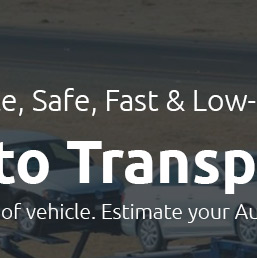 |
|
||||
 |
 |
 |
 |
||
 |
 |
|||||
 |
 |
 |
 |
 |
 |
 |
||
 |
 |
 |
 |
 |
 |
 |
 |
 |
 |
 |
|
 |
Shipping a Motorcycle Across Country: Best Practices and What to ExpectIn today's fast-paced world, where mobility and adventure often go hand in hand, shipping a motorcycle across the country can be both an exciting and daunting task. The idea of traversing state lines without the wind in your hair might seem contrary to the spirit of motorcycling, yet there are myriad reasons why one might choose to ship rather than ride. Whether you're relocating, selling a bike, or preparing for a cross-country rally, understanding the ins and outs of motorcycle shipping can make all the difference. Firstly, let's consider why you might opt for shipping. Perhaps you lack the time to embark on a long journey, or maybe the bike needs to arrive in pristine condition for a show. Whatever the reason, the logistics involved in transporting a motorcycle safely and efficiently require careful planning. Choosing the right shipping method is crucial. You have options ranging from enclosed trailers, which offer protection from the elements, to open carriers, which are more cost-effective but expose your bike to weather and road debris. Before committing to a shipping service, it's essential to do your homework. Researching potential carriers can reveal a lot about their reliability and customer satisfaction. Look for companies with robust insurance policies and positive reviews. An often-overlooked aspect is the experience of the drivers; seasoned professionals are more likely to handle your motorcycle with the care it deserves. Once you've selected a carrier, preparing your motorcycle for transit is the next step. Start by giving your bike a thorough cleaning; this not only makes it easier to spot any pre-existing damage but also helps in the inspection process. Document the current condition of your motorcycle with photos from various angles. Ensure all loose items are removed or secured, and check for any fluid leaks. It's also advisable to keep the fuel tank low, reducing weight and minimizing the risk of leaks.
On the day of pickup, being present during the loading process can provide peace of mind. Watch how the motorcycle is secured, ensuring it is stable and protected. The use of soft straps and padding is a good indicator of a professional job. During transit, keep in touch with the carrier to receive updates on your motorcycle's progress. Upon arrival, inspect the bike thoroughly before signing off on the delivery. Any discrepancies should be noted immediately and documented with photographs. In conclusion, while the prospect of shipping a motorcycle across the country might initially seem overwhelming, following these best practices can streamline the process, ensuring your bike arrives safely at its destination. With careful planning and a bit of due diligence, you'll find that shipping can be a viable and sometimes preferable alternative to riding cross-country. Whether you're a seasoned motorcyclist or new to the world of bikes, understanding what to expect can turn a potentially stressful experience into a smooth and seamless one. https://www.shiply.com/us/motorcycle-shipping?srsltid=AfmBOorUW4oH4vUKzvegX4hLRM10tTcGFaMktBWrUwyFFrCYf_2BvUO_
The cost of shipping a motorcycle will vary based on a number of factors, but average prices range from $180 to $300 for journeys under 1,00 miles and $300 to ... https://citizenshipper.com/blog/shipping-a-motorcycle-cross-country/
In this article, we'll share our top tips for shipping your motorcycle cross country at affordable rates, so you can focus on the excitement of your new ... https://www.riders-share.com/blog/article/motorcycle-shipping
Shipping a motorcycle doesn't have to involve a Uhaul trailer rental or even a motorcycle trailer.
|
